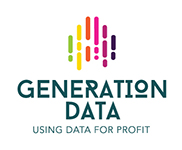2. How to make your data strategy more strategic
How To Make Your Data Strategy More Strategic
MAKE A BUSINESS CASE FOR DATA
Review your overall strategy:
What are our business’ main goals?
How will you measure success?
CARRY OUT A DATA AUDIT
What data do we already have and how are we using it?
ESTABLISH THE DATA QUESTIONS
What do we want to find out that will help us grow?
Establishing a data strategy
DATA COLLECTION
How will we collect the data we need to answer the questions?
DATA STORAGE
Will the data have the right level and ease of access?
DATA ANALYSIS
What insights does the data provide?
DATA INTEPRETATION AND USE
Sharing Discussion Decision
Implementation
Evaluation and adjustment
 The data value chain
The data value chain
Make a business case for data
Make sure that within six to nine months after you have started a data project, you start showing benefits to the business.
Review your business overall strategy.
Outline the objectives you want to achieve in your business in the short and long term. Visualize what your future business looks like – who will your customers be, what will they purchase, where & how?
Build a hypothesis.
Develop a theory about how the data will help you achieve the objectives you seek. What sort of data will help get you there? Do you need more data, or better quality of data, or simply to better use the data you already have?
Define the business value.
Specify the benefits you expect to generate by your use of data in relation to your overall objectives (eg. increasing revenue, saving time etc.). Communicate it clearly and present the value it will create for your business in quantitative and qualitative terms.
Carry out a data audit
Understanding where you are, will make it easier to get to where you’re going.
Find out what data you have and where it is.
Make a list of all the different types of data assets your business has and where it is currently stored/accessed. Data assets might be stored in different places using different apps or programs.
Interview key players to find out how data Is used
Interview managers and staff to find out what data they have, how they use it, and what problems they’re facing. Explore how data does or could provide value to their work.
Understanding where you are, will make it easier to get to where you’re going.
Prioritize and organize
Organize all of the data based on its value to your business: which data drives the most profits, for example? (Eg. a web-based company would value email addresses above mailing addresses).
Identify gaps
Look at the data you have and how it provides value to key areas in your business. Is valuable data being wasted? Is there data that you need that you don’t have?

